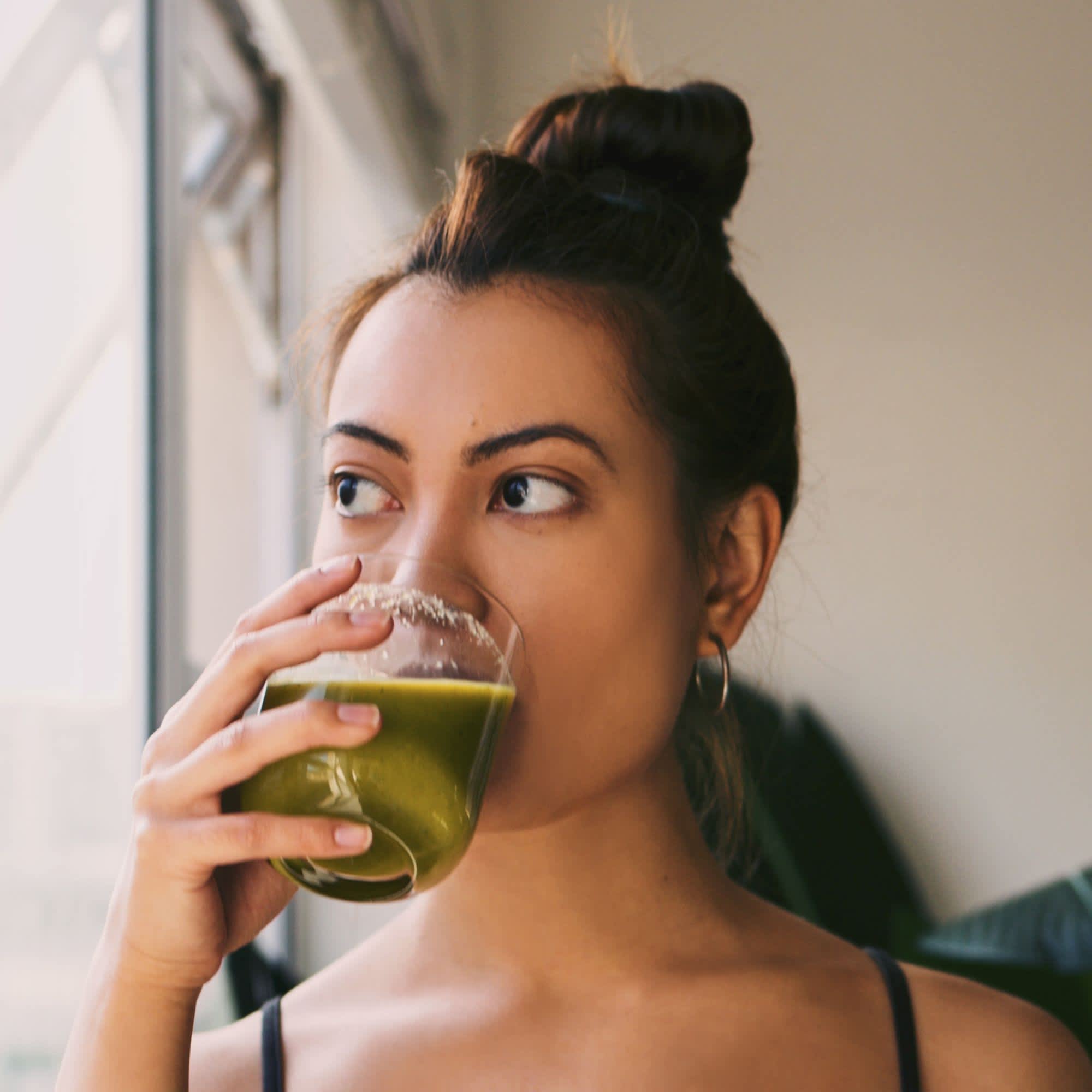
- POPSUGAR Australia
- Fitness
- Chlorophyll Water Is Trending and Promises Clear Skin and Weight Loss — But Does It Work?
Chlorophyll Water Is Trending and Promises Clear Skin and Weight Loss — But Does It Work?

Another day, another health trend emerging from TikTok. This time, the trend involves chlorophyll — a word you probably haven’t thought of since your high school science class. According to TikTok users, consuming liquid chlorophyll in water can lead to clear skin, help with inflammation, while also reducing bloating and for some people, can result in weight loss.
But what exactly is chlorophyll? It’s the most abundant pigment in plants that makes them green and healthy, says Healthline, and it’s also packed full of vitamins and antioxidants. Chlorophyll can also be found in green veggies like spinach and asparagus or be consumed in supplement form via the chlorophyll drops being used by those on TikTok.
Somewhat surprisingly, chlorophyll drops don’t contain any actual chlorophyll. According to L’officiel, chlorophyll drops contain “chlorophyllin, which is a mixture of salts derived from chlorophyll, but not actually chlorophyll (despite brands naming them so)”. While slightly misleading, chlorophyllin behaves in a similar way to chlorophyll.
As for the efficacy of chlorophyll water (and the benefits purported by people on TikTok), experts aren’t convinced. In fact, there is little research that supports any of the claims made by the chlorophyll water devotees on TikTok. “Research results are mixed about whether chlorophyll can actually boost your health,” says Healthline. “Larger, more rigorous studies are needed to evaluate the potential health benefits of chlorophyll.”
So far, the only real benefits seen from the use of chlorophyll is through topical application. A 2015 study of just 10 people found that applying chlorophyllin topically for a period of eight weeks improved sun-damaged skin. While undoubtedly interesting, it’s an incredibly small study and involves the topical use of chlorophyllin directly on the skin — not consumed orally.
While chlorophyll drops do include a number of vitamins and minerals, there’s no research that currently shows it results in clearer skin, a reduction in bloating, or weight loss. In fact, you’re better off getting your nutrients from veggies, says clinical dietitian nutritionist Steph Grasso, M.S., R.D.
“If you eat one cup of spinach, you’re getting in about 24 milligrams of chlorophyll,” Grasso told MindBodyGreen. This works out to be roughly half a teaspoon of the liquid chlorophyll, but “when you eat your greens, you’re not only getting in your chlorophyll but also vitamins, minerals, antioxidants, and fibre”.
For Grasso, she prefers veggies as they give you more bang for your buck compared to consuming chlorophyll in water. While the health trend might have a few skin benefits, it also probably has something to do with increased water consumption as well. While there’s nothing wrong with drinking your greens, it isn’t a replacement for eating them.


